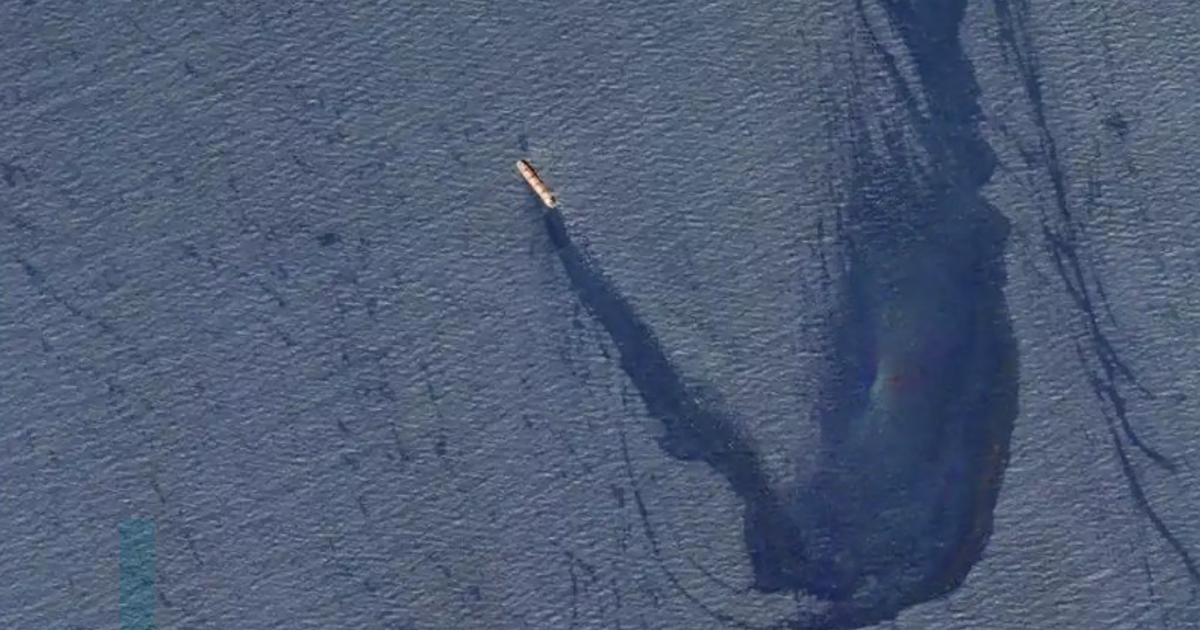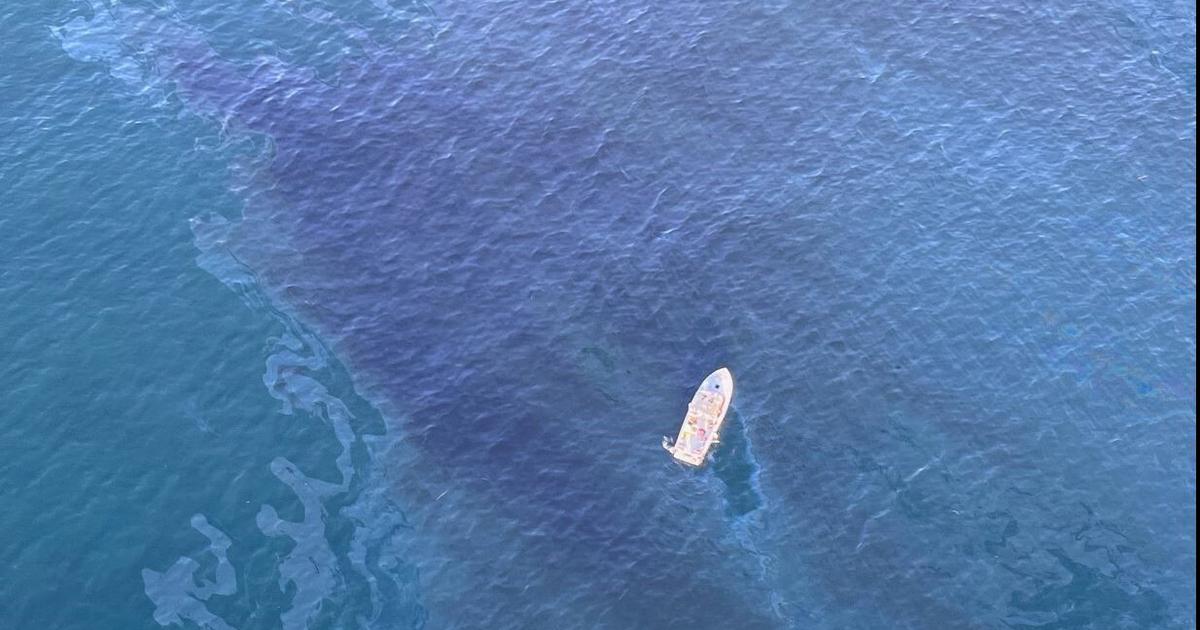Cleaning work on the beaches of Ancón (Peru). Stringer (EFE)
The geopositioning data issued by the Italian oil tanker
Mare Doricum
on January 15 show that the ship moved abruptly during the unloading operation at the La Pampilla Refinery in Peru, according to a study carried out based on public information data by the consultants Inerco and Orbital Eos and to which EL PAÍS has had access.
The conclusions of said study indicate that the movement of the ship subjected the hoses that connected it to the submarine unloading facility to enormous tension, breaking it and spilling the crude oil that the ship was pumping into the sea, causing the spillage of more than 10,000 barrels. .
The oil tankers that arrive at the La Pampilla refinery, owned by the Spanish company Repsol, unload the crude in a multi-buoy field located about 4.5 kilometers from the coast.
The banks are moored to the buoys and connected with huge hoses to an underwater installation called Plem (acronym for
pipeline end manifold
).
The unloading operation must be undertaken with the sea in good conditions.
A recreation carried out by the firms Inerco and Orbital Eos shows how the oil tanker invaded the Plem area.
The analysis has been carried out with data from the Automatic Identification System (AIS), a standard of the International Maritime Organization (IMO) to improve maritime safety, which must be used by all ships over 300 tons .
This technology emits position and other data about the ship on a recurring basis through a transponder.
The data is received by receiving stations on the ground or on board satellites.
Data provided by Exact Earth, a Canadian company based in Ontario, have been used in the study of the spill in Peru.
The company that has analyzed the data is Orbital Eos, a Spanish firm based in Valencia that offers satellite data analysis services for maritime applications.
Founding members of this company have 12 years of professional experience working for Salvamento Marítimo de España.
The study shows the ship's movements on the afternoon of January 15, when some 12,000 barrels of crude oil spilled off the Peruvian coast.
Data is recorded in Universal Time (UTC).
Peru's local time on that date is five hours behind.
The key moment occurs from 22:02, UTC time (17:02, Lima time), when the ship has been correctly positioned for hours for the unloading operation, at a certain distance from the Plem.
Minutes later, it begins a sudden lateral displacement, separating itself from the holding buoys, which leads it to run over the Plem area between 10:09 p.m. and 10:14 p.m. and start the unloading system from its roots.
01:06
Ship movements in the oil spill area off the coast of Peru
A dead bird impregnated with oil spilled at Repsol's La Pampilla refinery in Peru.
The captain of the
Mare Doricum,
Giacomo Pisani, did not notify of the ship's displacement, which prevented a faster and more efficient reaction.
The captain did later issue a series of letters of protest or incidents in which he accused Repsol of irregularities.
In statements to the media, he pointed out that there were no incidents with the sea, which contradicted Repsol's version, which linked the spill to the waves caused by the underwater volcanic eruption in Tonga.
However, precisely in one of those letters, the captain himself admitted verbatim that “an abnormal sea/wave condition occurred during the unloading operation at Terminal 2, causing the mooring lines to break.”
Although the flow of crude oil into the sea was stopped minutes after the first displacement and the first break of the ship's moorings, these continuous movements delayed for hours the moment in which the divers were able to descend to the submarine discharge facility and detect its complete rupture.
The movements of the ship continued throughout the afternoon and until after midnight on January 15, successively breaking on several occasions the moorings that should have kept it static during unloading.
The ship's captain protested in one of his letters about the delay with which a pilot from the Port Authority arrived to stabilize the ship.
Repsol said in a statement in response to these allegations that providing a port pilot is not within its competence.
The need for a pilot to intervene fits with the conclusions of the analysis that shows the abrupt movements of the ship.
A worker cleans up the oil spill on the coast of Peru, in the days following the spill. Juan Ponce (EFE)
According to sources close to the case, the result of the investigation has been brought to the attention of the Peruvian authorities by Repsol.
To questions from EL PAÍS, the company indicated that it cannot comment on a matter that is still subject to investigation and that Repsol has made all the information available to the authorities.
The shipping company for which the oil tanker worked is the Singaporean Teekay Tankers Chartering Pte. Ltd, and the owner of the ship is the Italian Fratelli D'Amico Armatori SpA EL PAÍS tried this Friday afternoon without success to obtain its version through calls to the office of the Spanish subsidiary of Teekay and the Rome office of the shipowner.
The Peruvian authorities initially pointed to Repsol as responsible for the spill, but the analysis of what happened may end up pointing to the ship.
Industry sources point out
That same afternoon of January 15, the captain of the
Mare Doricum
notified the ship's insurance and two representatives boarded the ship only four hours after the displacement of the vessel and the consequent breakage of the Plem.
At stake are multimillion-dollar compensation, either by companies or insurers.
Litigation over responsibilities will be predictably long.
To clarify what happened, it may be useful to deliver the recordings and data from the VDR (
voyage data recorder)
of the ship, a kind of black box that records the movements and other data of the ship.
Exclusive content for subscribers
read without limits
subscribe
I'm already a subscriber



/cloudfront-eu-central-1.images.arcpublishing.com/prisa/KBZLUQ5BWNBNBFOHTOUOOJ3KUI.jpg)




